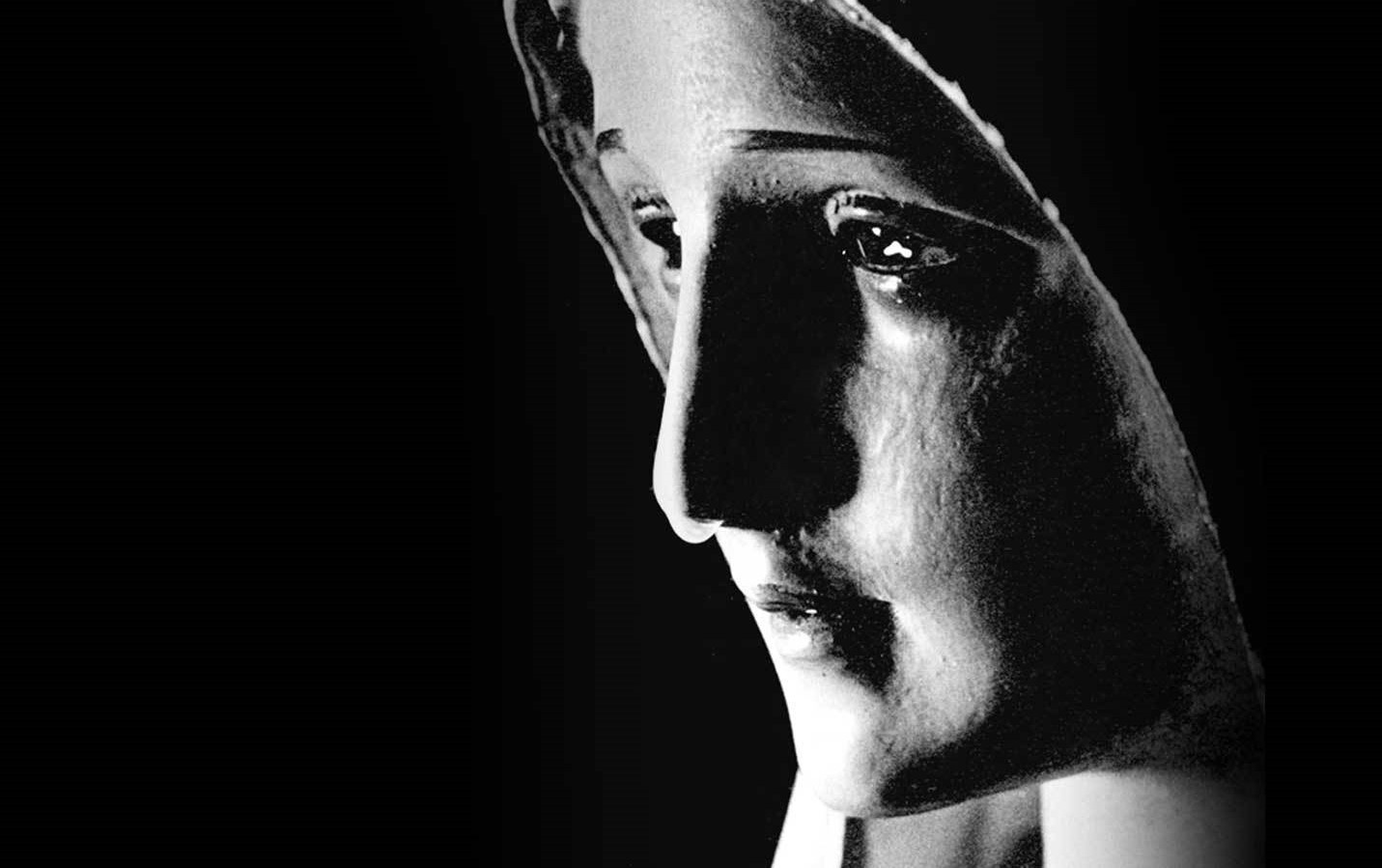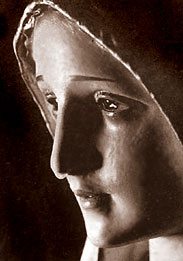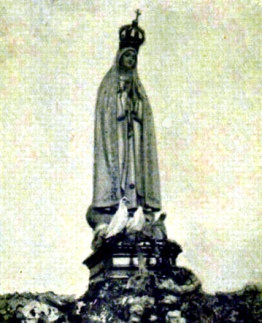From Forums of the Virgin Mary [initial translation]:
How to read the message of the tears of images.
The tears of images of the Virgin Mary have happened throughout history, but they have grown noticeably from the ’60s of the last century.
Things began to happen there that generated these demonstrations.
But after a few decades the phenomenon became less noticeable, although we know that it continues to happen in homes, in prayer groups and there are reports that images also weep in chapels and parishes.
Here we will talk about the peak of notoriety that the tearing of images of the Virgin Mary have had in the decades from 1960 to 1980; which other manifestations accompanied it; and why the notoriety, that is, the visibility of these manifestations, has decreased, although its frequency seems to remain high.
And we will establish the reasons why Our Lady cries through her images, and what the message is that she has to give us that makes her cry.

Manifestations of images of the Blessed Virgin and of Jesus Christ became more common from the 20th century.
But especially in the decades from 1960 to 1980, the demonstrations skyrocketed in notoriety.
We are basically talking about the manifestations of tears and blood in the images of the Virgin Mary.
And what happened at that time that changed the world and caused Our Lady to begin to cry more regularly through her images?
At that time the sexual revolution took place, which imposed on the world a level of sin unknown until then, and a dizzying race to deepen it.
And also the apostasy in the Church had had its revolutionary moment, with the interpretation that the modernists made of the conclusions of the Second Vatican Council [1962-1965].
This caused a large number of priests and religious to abandon their habits; a sharp decline in Mass attendance; the war against images and popular devotions [is this why the five First Saturdays fell into silence, when they were most needed?]; and the erosion of the faith transmitted from the apostles.
An apostasy that later advanced.
This avalanche of manifestations of images of the Virgin produced initial surprise in the media and in the clergy, especially its most notorious manifestations.
Like the image of Our Lady of Akita that wept 101 times in Japan, during which Our Lady gave a message to the seer about the destruction that the apostasy was going to produce within the clergy and the persecution of those devoted to Mary.

Also the manifestations of the images of the Mystic Rose, which implied an expansion of the basic message of Fatima, but with a call to a more intense and growing spiritual life.
And the Pilgrim Virgin of Fatima, who in her tours of the West produced an enormous number of supernatural manifestations that were spread throughout the world.
The tear that catapulted the notoriety of this type of manifestation was the cry of the Pilgrim Virgin of Fatima, in the United States, in 1972.
Images of what happened there traveled the world, due to the power of the North American media and reports to the priests who naively witnessed an unusual phenomenon for them.
Everyone could see a thick drop slipping to the tip of the nose of the Pilgrim Virgin of Fatima image that toured the United States.

A photograph of that drop sliding down the nose went around the world and caused a huge impact.
And not only that, the newspapers showed that the tears occurred in several different cities in the country.
The chronicles showed Father Elmo Romagosa confused and stupefied because he had seen the tear slowly form on the lower eyelid of the statue.

And as one skeptic declared to the press,
“We ask God to help us understand the meaning of what we have witnessed.”
To which Father Joseph Breault replied, “Father, Our Lady has a message for the world, but few want to hear it.”
Showing the two personal positions that we can find in the clergy.
The press also reported the miracle of the pigeons at that time.
The western image of the Pilgrim Virgin of Fatima had been brought to the U.S. in a B17 Bomber from Cova de Iria, passing through an air base in the Azores. [scroll for more]
And the miracle was that 12 of the pigeons, which were around the Pilgrim Virgin in Portugal, accompanied the bomber, landing in the Azores several hours after the bomber.
And also several of those pigeons accompanied the image during the visit to various cities in the U.S. and on its tour of other countries.
For example, on May 1, 1978, in Rome, two pigeons could not be dislodged from the foot of the statue for the whole day.
The next day, at the consecration of the Mass, the doves flew and perched on the upper arch and on each side of the balcony.
And after Communion they returned to Our Lady’s feet, where they remained all night.

The same thing happened when the image arrived in Lourdes, France, and elsewhere.
But it was not only these three images of the Virgin of Akita, the Mystic Rose, and the Pilgrim Virgin of Fatima that teared up.
Making an inventory of all the images of the Blessed Virgin that have shed tears throughout the world is impossible, but we know that they can be counted in the thousands.
In some of these demonstrations studies were made on tears and the result has been that they are human tears.
However, the notoriety of the demonstrations fell after the 1980s, and it seems that it did so for two reasons.
First, because the media purveyed less coverage, since the demonstrations pointed to the abundance of sin in the world, which they themselves encouraged.
And second, because the clergy stopped getting involved, dismissing the importance of the phenomenon and even hiding it, when it happened in the parishes, because the demonstrations also incriminated them.
So today these manifestations of tears and bleeding of images continue to exist, but are relegated to the private sphere of houses or prayer groups.
And when they happen in religious places, they are simply dismissed and discouraged from spreading.
But when tears lose notoriety, so does the message, because tears seem to be conceived as dramatic support to communicate a message.
And what is that message?
There are many local and global issues that Our Lady is concerned about, to the point of causing her tears.
But the world has become globalized and the problems tend to be more the same.
We can have a clue about the point in the messages that dozens of seers are receiving throughout the world at this time, which more or less say the same thing.
John Paul II, on a visit to the Shrine of Our Lady of Tears in Syracuse, said something central,
“The tears of the Virgin bear witness to the presence of the Mother.”
They are tears of pain her children cause in her heart because they sin, they do not convert, they do not listen to her warnings, and they even insult her.
And on December 31, 1990, Our Lady told Father Gobbi a series of reasons why she cries.
Tears are the expression of her sadness and discomfort before her children who have not listened to her.
They have continued to walk the path of rejecting God and his law of love.
She cries for the Ten Commandments of the Lord are violated continuously and publicly.
She cries because humanity does not accept His invitation to conversion and return to the Lord and continues to run stubbornly along the path of rebellion against God.
She cries because the souls of His children are being lost and are going to hell in great numbers.
And because very few are those who agree to His request to pray, repair, suffer, and offer.
Because the Lord is openly denied, outraged, and blasphemed and His heavenly Mother is publicly despised and ridiculed. [scroll for more]
Because His requests are not being accepted and the signs He is giving are not believed.
It hurts — the loss of faith that is happening — because it has spread; the errors are being spread and accepted by the majority.
She also cries because the precept of love of neighbor is violated daily by selfishness, hatred, violence, and division in families and in society, which produces wars [and political rancor, even among dedicated Catholics].
And she cries for the Church, which follows the path of division, of loss of the true Faith, of apostasy and errors spread more and more without anyone opposing them.
And she cries for what will happen because of this rebellion against God and neighbor, which has made humanity enter the painful times of purification, which will cause suffering to increase for everyone, including within the Church.
And she ended by telling Father Gobbi on this last day of 1990 that,
“The hours you are about to live are among the most serious and painful.”
And asked for an effort to “pray, suffer, offer, repair with me, that I am the Mother of intercession and reparation.”
Well, up to here what we wanted to talk about is why, starting in the 1960s, the tearing of images of the Virgin Mary has spread and how this phenomenon still continues but has been losing visibility to hide the message.
And I would like to ask you if you have seen cases of images of the Virgin Mary tearing or not.
